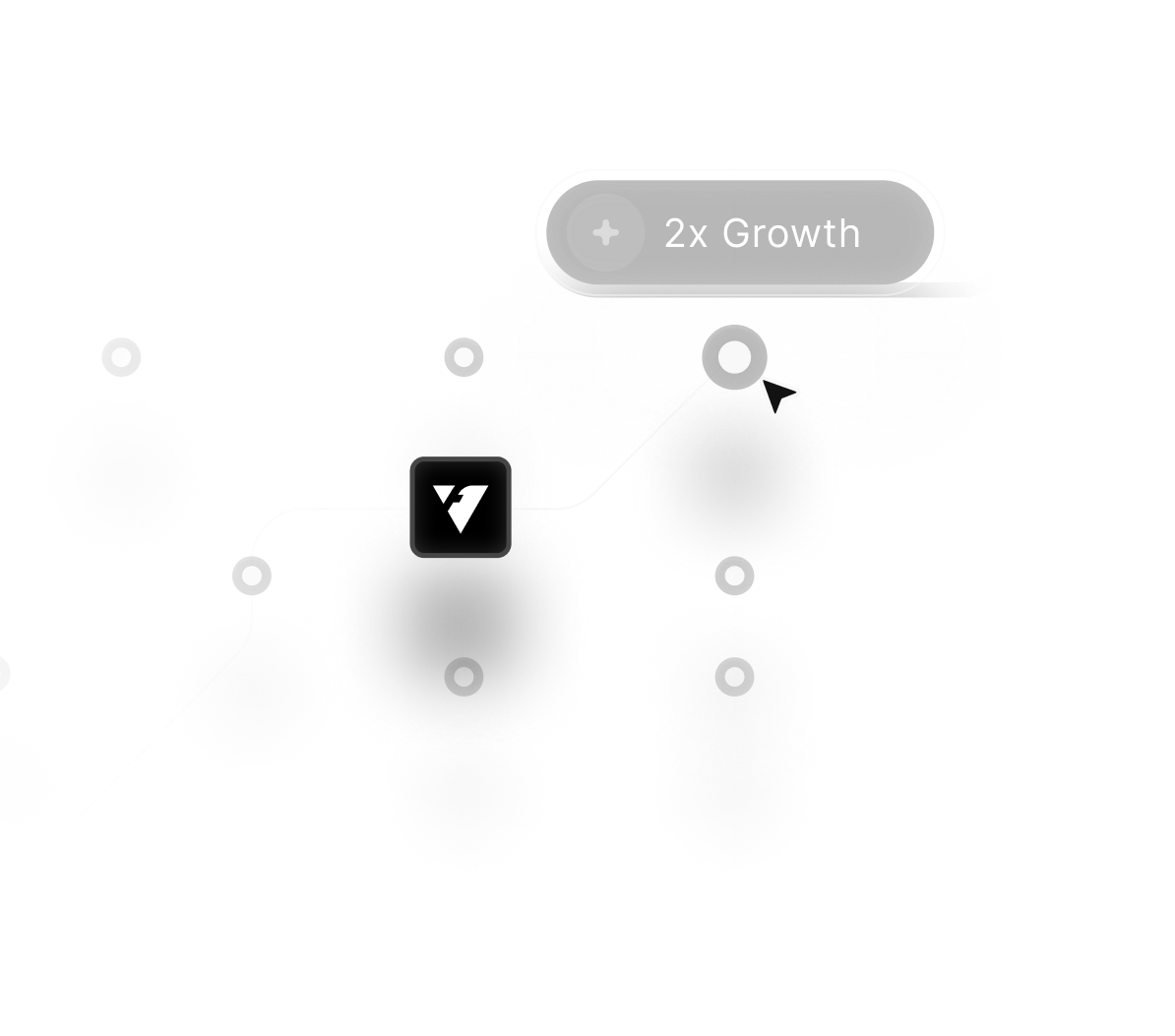January 2, 2026
Webflow For Startups | Design your SaaS Website with Ease in 2026

Startups must establish a digital presence that communicates vision, trust, and value through thoughtful design. Webflow provides startups a user-friendly way to craft SaaS websites tailored for flexibility and scalability.
Its no-code environment makes building and maintaining a product-focused site simple for small teams. Interactive visuals and animations guide users through features, driving engagement and retention.
Responsive layouts ensure smooth browsing across screens, enhancing overall usability. Built-in CMS tools help manage blogs, updates, and product announcements efficiently.
SEO-friendly design structures improve visibility for early-stage SaaS brands. Webflow’s performance-driven foundation ensures fast loading times and a polished presentation.
Customization tools allow startups to personalize every visual and functional detail easily. SaaS innovators see Webflow as a platform that blends agility, performance, and visual storytelling seamlessly.
"Build your startup site now.
Book your free SaaS website consultation call today."
Table of Contents
- Why Webflow is Ideal For Startups?
- Key Features of Webflow For SaaS Websites
- Step-by-Step Guide to Building a SaaS Website on Webflow
- Best Practices For SaaS Website Design in 2026
- Pros and Cons of Using Webflow For SaaS Websites
1. Why Webflow is Ideal For Startups?

For startups, time and resources are always limited. Webflow provides a perfect solution by eliminating the need for developers while offering full design control. Here are some reasons why startups are increasingly adopting Webflow:
- No coding required: Webflow's intuitive drag-and-drop interface allows anyone to build and manage websites.
- Cost-effective: Startups can avoid hiring costly developers or designers and save on overhead expenses.
- Scalable design: Webflow allows easy scaling with its CMS features and responsive layouts as startups grow.
- SEO-friendly: Built-in SEO tools ensure better visibility and ranking on Google from day one.
- Fast launch: With ready-to-use templates, startups can design, build, and launch their website quickly.
2. Key Features of Webflow For SaaS Websites

Webflow offers a variety of features that make it perfect for building SaaS websites:
- Customizable Templates: SaaS businesses can choose from templates tailored for landing pages, pricing pages, and product showcases.
- Responsive Design: All websites are mobile-friendly, ensuring seamless experiences across devices.
- CMS Integration: Easily manage blog posts, case studies, and product updates without needing external plugins.
- User-Friendly Interactions: Add micro-interactions and animations to enhance user engagement.
- Third-Party Integrations: Webflow supports integrations with CRM tools, analytics platforms, and payment processors.
- Hosting & Security: Webflow handles hosting, SSL certificates, and site security, so startups don’t need to manage these separately.
3. Step-by-Step Guide to Building a SaaS Website on Webflow

Step 1: Sign Up for Webflow
- Visit Webflow and create an account.
- Choose a plan that fits your needs (e.g., Basic or CMS for smaller projects, Business for advanced functionality).
Step 2: Select a Template
- Browse Webflow’s template marketplace and pick a SaaS-specific template.
- You can also start from scratch if you prefer a custom design.
Step 3: Customize the Design
- Use Webflow’s drag-and-drop editor to modify the layout, colors, and typography.
- Add your brand assets, such as logos, product screenshots, and icons.
Step 4: Add Key SaaS Pages
- Build essential pages like Home, Features, Pricing, About Us, and Contact Us.
- Create a Blog section to publish industry insights and updates.
Step 5: Optimize for SEO
- Set page titles, meta descriptions, and alt texts to boost your site’s search engine visibility.
- Use Webflow’s SEO tools to track performance and ensure your site meets SEO best practices.
Step 6: Integrate Third-Party Tools
- Connect your website with Google Analytics, CRM tools, and email marketing platforms to automate tasks.
- Add payment gateways if you offer subscription plans or SaaS products.
Step 7: Publish and Launch
- Preview your site on multiple devices to ensure it’s responsive.
- Once satisfied, hit Publish and launch your SaaS website to the world.
4. Best Practices For SaaS Website Design in 2026

- Use Minimalist Design: Focus on clarity with concise messaging, simple layouts, and plenty of white space.
- Highlight Key Features on the Homepage: Capture user attention quickly by showcasing your product’s core benefits above the fold.
- Optimize for Mobile: With more users accessing websites from mobile devices, ensure your SaaS site offers a seamless experience on all screen sizes.
- Implement CTA Buttons Strategically: Place clear call-to-action (CTA) buttons throughout the site to encourage users to sign up or explore further.
- Leverage Micro-Interactions: Add subtle animations for better engagement, such as hover effects on buttons or transitions between pages.
- Incorporate Customer Testimonials and Case Studies: Showcase social proof to build trust among potential users.
5. Pros and Cons of Using Webflow For SaaS Websites

Pros:
- Easy to learn and use, even for non-technical founders
- Fast, high-performance hosting included
- Supports seamless CMS and e-commerce integration
- SEO tools available out of the box
Cons:
- Steeper learning curve for advanced design features
- Limited native plugins compared to WordPress
- Custom code required for highly complex features
- Can get expensive for businesses with large websites or heavy traffic
Conclusion
In the SaaS world, an effective website acts as both a showcase and a conversion tool for early adopters and investors. Webflow offers the flexibility and design control needed for quick, high-quality website development.
Its no-code setup allows founders to focus on branding instead of technical complexity. Fast load speeds and optimized visuals help maintain performance as your startup scales.
Dynamic CMS tools keep product updates and blog content organized efficiently. SEO structure ensures your SaaS brand gains attention from the right audience online.
Animations and visual flow enhance storytelling and help convert visitors into customers. Responsive design guarantees accessibility across devices and browsers for consistent quality.
Launch your Webflow project now to create a SaaS platform that showcases creativity and business growth.

FAQ
1. Can startups use Webflow without coding knowledge?
Yes, Webflow offers a no-code interface, making design and management easy for founders.
2. Is Webflow suitable for SaaS businesses?
Absolutely, Webflow provides tools tailored for SaaS companies needing flexibility and scalability.
3. Can startups integrate payment or signup systems?
Yes, Webflow supports integrations for forms, payments, and automation tools.
4. How does Webflow support SEO for startups?
Webflow provides customizable meta tags, clean code, and structured layouts for better rankings.
5. Does Webflow support responsive website design?
Yes, it automatically adapts to mobile, tablet, and desktop screen sizes.
6. Can I update my startup’s website content easily?
Yes, Webflow’s CMS lets you manage text, blogs, and visuals through a simple editor.
Table of Contents
Choose Our Service, Grow Fast!
Follow Us
Related Posts

January 13, 2026
Hostinger Review 2026: Find pros, cons & a valid 20% OFF coupon! Get a discount on web hosting or VPS hosting. Exclusive coupon code inside!
Hostinger Review 2026: Find pros, cons & a valid 20% OFF coupon! Get a discount on web hosting or VPS hosting. Exclusive coupon code inside!


January 9, 2026
Discover 8+ Smart Phones Framer templates for 2026 that combine sleek design, product presentation, and user-friendly interfaces for a professional online experience.
Discover 8+ Smart Phones Framer templates for 2026 that combine sleek design, product presentation, and user-friendly interfaces for a professional online experience.


Free landing page Webflow templates offer professional polish without cost, enabling brands to deploy high-impact pages, edit content easily and scale fast.
Free landing page Webflow templates offer professional polish without cost, enabling brands to deploy high-impact pages, edit content easily and scale fast.

Ready to Scale Your Project to the Next Level?
Let's take your project to new heights, reach out and see how we can help you.




















